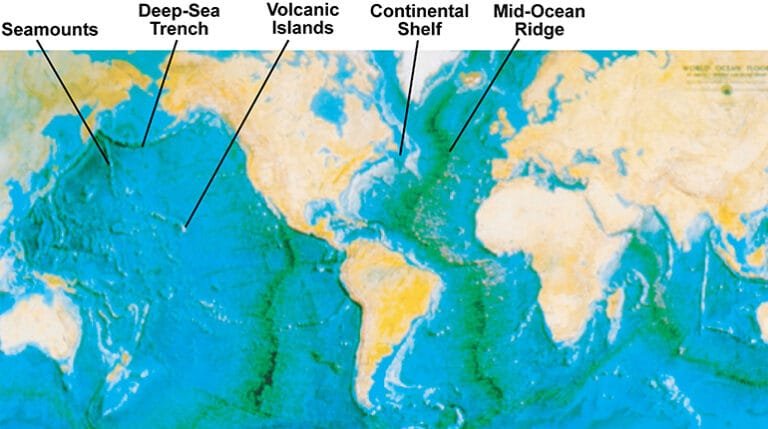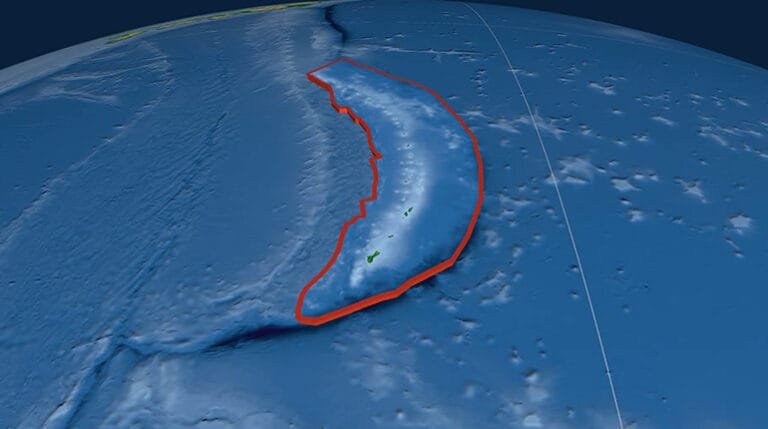Continental Shifts During the Flood

Throughout the centuries, few narratives have stirred as much debate and skepticism as the account of Noah’s Flood presented in the Christian Bible. Central to the understanding of this monumental event are questions about the nature of the flood, its extent, and the geological processes that could plausibly explain the cataclysmic phenomena described in Genesis. While many modern interpretations seek to diminish the scope of the flood, a closer examination through the lens of a young Earth perspective reveals that a global flood, as outlined in Scripture, can be understood within the context of significant geological changes such as continental shifts.
This exploration provides not only a defense of the biblical narrative but also a scientific framework that supports it, drawing on geology, paleontology, and hydrology to illuminate how continental shifts could have occurred during the flood. By considering the world as it existed before the flood, during the deluge, and the subsequent recovery of Earth, we can more fully appreciate the divine hand that facilitated both judgment and mercy in the story of Noah. The aim is to unravel how such monumental shifts could have played a role in the flood narrative as depicted in the Bible, providing a comprehensive viewpoint that upholds the historical accuracy of God’s Word.
Read More About This
A Christian Physicist Examines Noah’s Flood
and Plate Tectonics. Read it here
Understanding the Biblical Flood
According to Genesis 6-9, God judged the wickedness of humankind and decided to send a worldwide flood to cleanse the Earth. Noah, a righteous man, was instructed to build an ark to save himself, his family, and pairs of every living creature. The account emphasizes both the universality of the flood and the divine orchestration of the events that transpired. Key elements in this account include the overwhelming nature of the waters, which covered the highest mountains, and the duration of the flood, which lasted 40 days and nights of relentless rain, followed by months of receding waters.
While critical scholars often reinterpret “the whole Earth” to mean a regional flood, a close reading of Scripture, supported by the traditions of Jewish and early church teachings, supports the belief in a universal flood. The language used in the biblical text—phrases like “all the high mountains under the entire heavens were covered” (Genesis 7:19)—suggests an event that affected not only localized areas but the planet as a whole. A young-Earth view posits that these accounts are rooted in historical fact, which can be substantiated by understanding how continental shifts may have played a pivotal role.
Geological Context of the Pre-Flood Earth
To understand the significance of continental shifts, we first need to conceive the geological state of the Earth before the flood. The pre-flood world is often characterized by its vastly different geography compared to our current landscapes. There are several aspects that warrant consideration:
- Correlating the Genesis Account with Geological Evidence: The biblical narrative implies a world of great stability and harmony, where the land was habitable and diverse. Those who advocate for a young Earth theory often suggest that prior to the flood, a single landmass akin to Pangaea existed, allowing lush environments to thrive.
This monolithic land structure could have contributed to an abundance of life, which is affirmed in Genesis 1:31, where God saw everything He had made and declared it “very good.” The unity of this landmass also plays into the idea of a catastrophic event, such as the flood, leading to immense geological upheaval.
Mechanisms of Continental Shifts
Given the biblical narrative and young Earth model, how could we envision continental shifts occurring during the flood? Several mechanisms serve to explain this large-scale geological activity.
Catastrophic Tectonics
One of the leading theories within the young Earth creationist perspective is that tectonic activity was significantly enhanced during the flood. Tectonic plates, which currently shift at a slow rate, could have experienced rapid movement due to unprecedented forces. The following factors could have contributed to this phenomenon:
- Increased Volcanic Activity: The upheaval of the Earth’s crust may have led to increased volcanic activity, which in turn could have altered landforms and created new land masses through the deposition of lava and ash.
- Subduction Zones and Plate Boundaries: Pre-flood geological conditions that saw plates interact at increased rates would lead to subduction and uplift, causing the formation of mountains and deep ocean trenches almost instantaneously.
- Instability of Geological Structures: Existing geological structures may have been destabilized, resulting in landslides, tsunamis, and Earthquakes, which could further affect land distribution.
All these processes could greatly alter the global landscape, contributing to the flood narrative by making it credible that such massive water levels could inundate regions worldwide.
Hydrological Dynamics
The movement of tectonic plates would not only impact landmass distribution but also have significant implications for the hydrological cycle. Rapid shifts could lead to the creation of new seas and oceans, while other areas could experience catastrophic flooding. As water began to accumulate, it would follow the newly formed low-lying regions. Several key hydrological aspects include:
- Displacement of Water: As landforms shifted, the displacement of water could lead to extreme flooding scenarios, creating conditions where waters would rise rapidly and engulf territories.
- Precipitation Increase: The disturbances in the Earth’s crust and subsequent volcanic eruptions would likely release immense amounts of water vapor into the atmosphere, contributing to excessive precipitation through the water cycle.
- Runoff and Erosion: Newly formed landscapes create varying channels for runoff, leading to significant erosion, which further aids in reshaping the Earth’s surface post-flood.
Post-Flood Geological Recovery
As the floodwaters receded, the post-flood Earth would exhibit a landscape drastically different from what existed before. The reconstruction of the planet’s geography would unfold over many years, encompassing several layers of geological and biological changes:
- New Landforms: The dramatic shifts would yield a landscape of mountains, valleys, and new coastlines shaped by the actions of water and earth.
- Fossil Record: Fossilized remains of creatures buried during the flood provide testimony to the magnitude of the event, encapsulating entire ecosystems that were swept away and preserved through sediment.
- Ecosystem Resilience and Diversity: The dispersal of life forms—both those saved on the ark and those that survived in various niches—would lead to a recovery period over time, as biological diversity gradually returned.
Theological Implications
Understanding continental shifts during the flood not only offers a scientific perspective but also emphasizes important theological lessons. The narrative of Noah represents new beginnings, God’s judgment, and mercy. The moments of great upheaval serve as somber reminders of the consequences of human sin and God’s sovereign power to reshape creation. In this view, the geological changes act as a backdrop to the central themes of the narrative, emphasizing God’s ultimate authority over creation and His ability to initiate change at a fundamental level.
Conclusion
The account of Noah’s Flood has proven to be a compelling subject for both theological reflection and scientific inquiry. By examining the mechanisms of continental shifts and their implications on the global landscape during the flood, we can better comprehend the multifaceted nature of this event as depicted in Scripture. A young Earth perspective posits that such geological activities were not only possible but likely necessary to facilitate the incredible events described in the Bible. As students and scholars continue to explore the intersection of faith and science, the narrative of Noah encourages us to embrace the testimonies of both the Word of God and the natural world that surrounds us.




